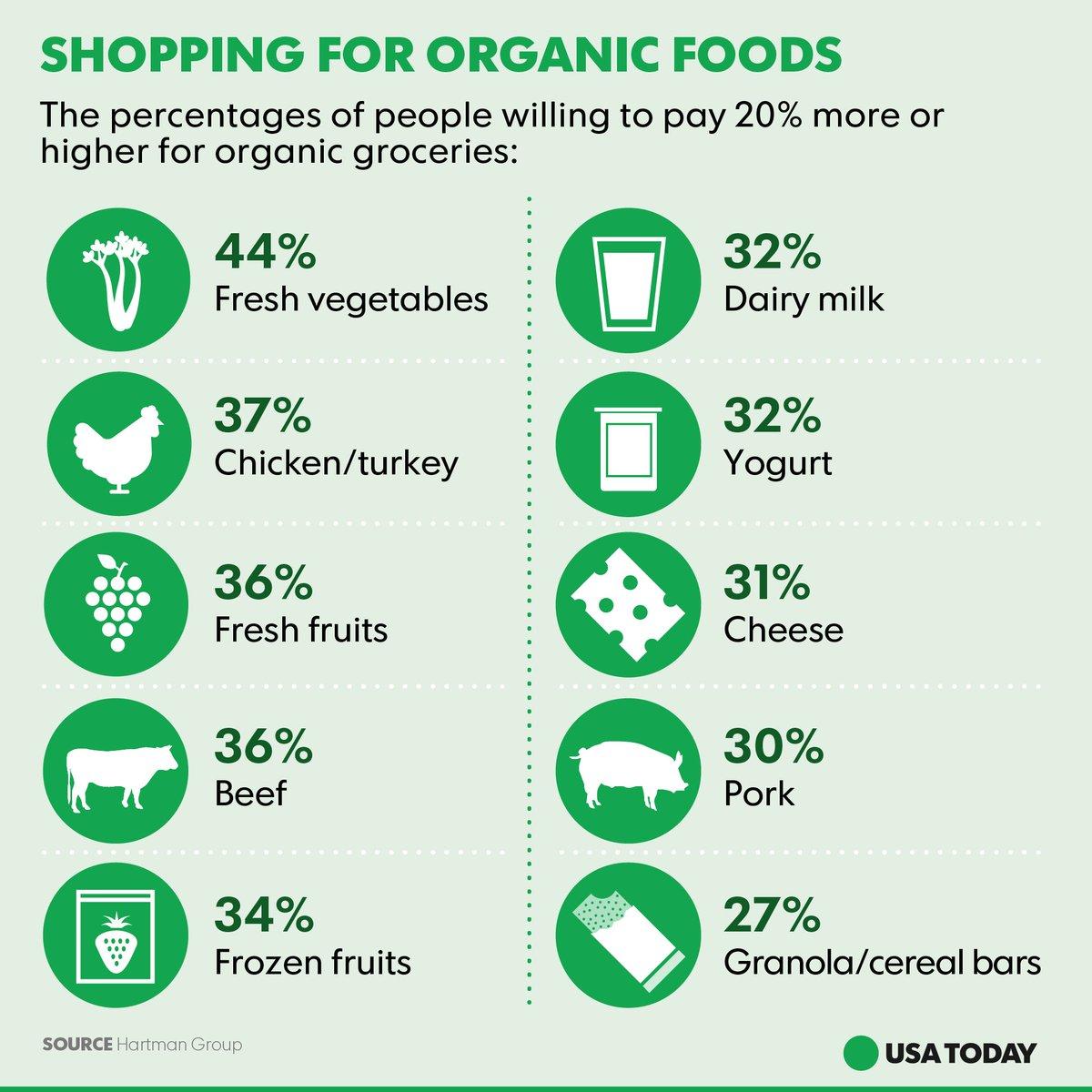In the bustling aisles of modern supermarkets, where vibrant displays of fresh produce vie for attention, a silent debate unfolds—a debate that traces its roots back to the fertile fields and innovative laboratories of our agricultural past. It is the ongoing discourse between organic and conventional foods, a topic that stirs passionate opinions and fuels endless discussions at dinner tables and policy forums alike. As consumers become increasingly conscientious about their health and the planet, the choice between organic and conventional foods transcends mere shopping habits, evolving into a complex narrative of science, sustainability, and personal values. This article delves into the heart of this debate, exploring the nuanced perspectives that shape our understanding of what it truly means to nourish ourselves and our world.
Navigating Nutritional Myths and Realities
In the vibrant world of food choices, the conversation surrounding organic and conventional foods is both dynamic and diverse. While organic foods are often lauded for their environmental benefits and perceived health advantages, conventional foods are frequently praised for their affordability and accessibility. This debate is fueled by a variety of factors, each with its own set of passionate proponents and skeptics.
- Environmental Impact: Organic farming typically emphasizes sustainability, often reducing chemical runoff and promoting biodiversity. However, it may require more land and resources than conventional farming.
- Health Considerations: Some believe organic foods are more nutritious and safer due to the absence of synthetic pesticides. Yet, research often shows that the nutritional differences are minimal.
- Economic Factors: Organic foods generally come with a higher price tag, making them less accessible to many consumers. Conventional foods, on the other hand, are usually more budget-friendly.
Ultimately, the choice between organic and conventional foods often comes down to personal values and priorities. Whether it’s prioritizing environmental sustainability or managing a tight grocery budget, understanding the nuances of each option can empower consumers to make informed decisions that align with their individual lifestyles.
Environmental Impact: Beyond the Surface
The conversation around organic versus conventional foods often touches on their environmental footprints, but it’s crucial to delve deeper into the nuanced aspects of their impact. Organic farming is frequently lauded for its minimal pesticide use and promotion of biodiversity, offering a habitat-friendly alternative that supports various species. On the other hand, it requires more land to produce the same yield as conventional farming, potentially leading to greater deforestation if not managed carefully.
Conventional farming, while often criticized for its reliance on synthetic chemicals, boasts higher yields per acre, which can be pivotal in meeting global food demands. However, it comes with concerns such as soil degradation, water pollution, and the loss of pollinators. Consider these aspects when evaluating their environmental impacts:
- Resource Usage: Conventional methods often use more water and non-renewable energy sources.
- Carbon Footprint: Organic farming can reduce greenhouse gas emissions, but the results vary widely based on practices and location.
- Soil Health: Organic farming typically enhances soil structure and fertility over time.

Cost and Accessibility: Breaking Down Barriers
In the ongoing debate between organic and conventional foods, one of the most significant factors is the cost and accessibility that can either open doors or create barriers for consumers. Organic foods, often praised for their environmental and health benefits, tend to carry a higher price tag due to more expensive farming practices, certification processes, and smaller-scale production. For many consumers, this premium price can be a substantial deterrent, making organic options seem more like a luxury than a staple.
Conversely, conventional foods are generally more accessible, both in terms of price and availability. The mass production techniques employed in conventional farming allow for lower prices, making it easier for these products to fill supermarket shelves and reach a broader audience. However, accessibility isn’t just about cost; it also involves geographical and informational aspects. In some regions, organic products are scarce, further limiting consumer choice. Addressing these barriers requires a nuanced approach, such as:
- Improving distribution networks to ensure organic products reach underserved areas.
- Educating consumers about the long-term benefits of organic foods, potentially justifying their higher costs.
- Supporting local organic farmers through subsidies or incentives to reduce production costs.

Making Informed Choices for Your Lifestyle
When navigating the bustling aisles of your local grocery store, the choice between organic and conventional foods often sparks a thoughtful debate. Organic foods are cultivated using natural methods without synthetic pesticides or fertilizers, while conventional foods may rely on chemical interventions to enhance growth and yield. Advocates of organic produce highlight several benefits:
- Reduced pesticide exposure: Organic farming practices limit the use of chemical pesticides, potentially lowering the risk of health issues linked to these substances.
- Environmental sustainability: By promoting biodiversity and soil health, organic farming can contribute to a more sustainable agricultural system.
- Perceived health benefits: Some consumers believe organic foods are more nutritious, although scientific evidence on this remains mixed.
On the other hand, conventional foods present their own set of advantages that appeal to a broad spectrum of consumers:
- Cost-effectiveness: Conventional farming methods often result in lower production costs, which can translate to more affordable prices for consumers.
- Availability: With their widespread use of modern agricultural techniques, conventional foods are typically more accessible and available year-round.
- Consistency in quality and appearance: Conventional farming often produces fruits and vegetables with a uniform look, which many consumers find appealing.
As you weigh these options, consider your personal values, budget, and health priorities. Each choice comes with its own set of trade-offs, and understanding these can empower you to make decisions that best align with your lifestyle.
To Wrap It Up
As the curtain falls on the enduring debate between organic and conventional foods, we find ourselves not at a conclusion but at a crossroads. The choice between these two paths is as diverse and nuanced as the people who walk them. Each option presents its own bouquet of benefits and challenges, leaving the ultimate decision to the individual preferences and priorities of consumers around the world.
In the fertile ground of this debate, what grows is a deeper understanding of our relationship with the food we eat. It invites us to consider not only the nutritional content and environmental impact but also the stories behind each bite. As we navigate this complex landscape, we are reminded that the journey of making informed choices is as important as the destination itself.
Whether your basket is filled with the vibrant colors of organic produce or the reliable staples of conventional farming, what truly matters is the conscious choice to nourish both body and mind. The conversation continues, and with each voice, we cultivate a richer tapestry of perspectives that will shape the future of our food systems. As we part ways, let’s carry forward a shared commitment to curiosity, sustainability, and the celebration of diversity in our plates and beyond.


































